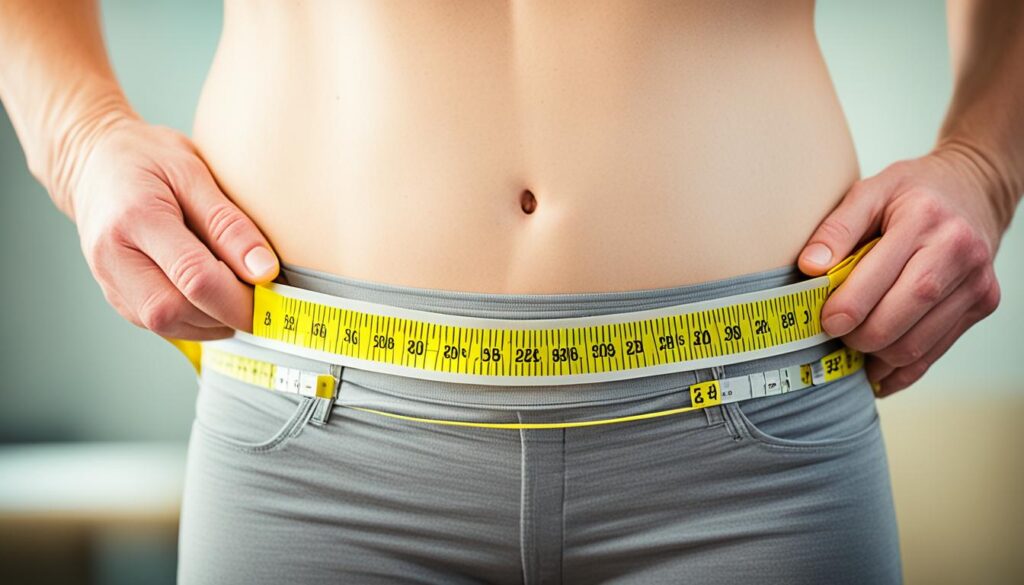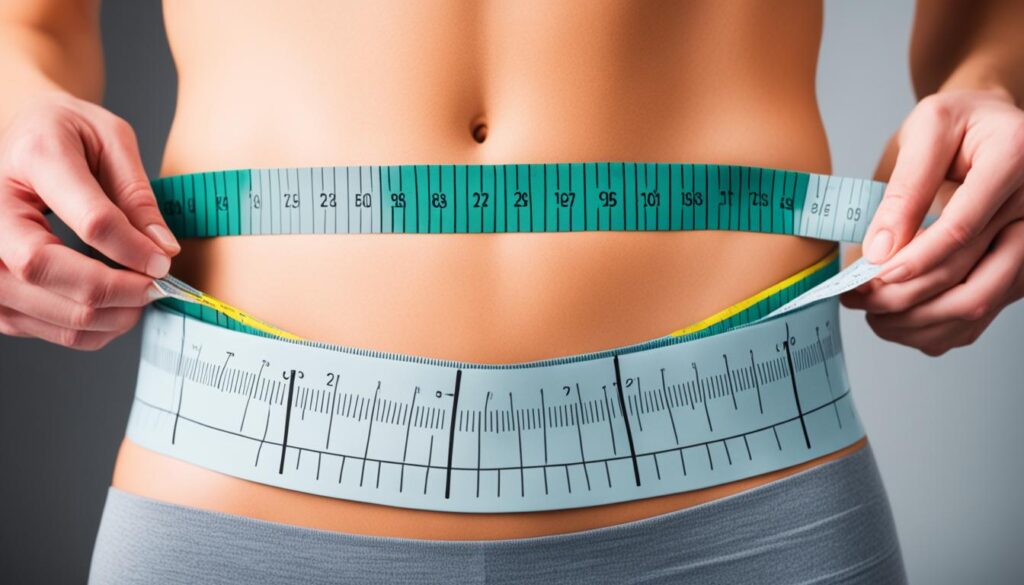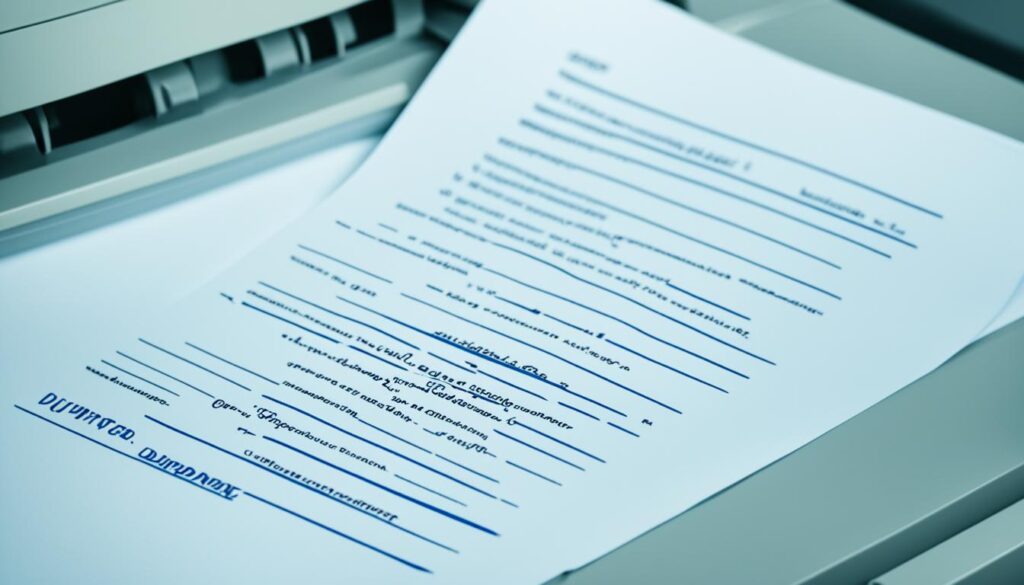Have you ever slipped into a pair of jeans that seemed tailored just for you, while another pair with the same size tag didn’t fit at all? The secret may lie in how to measure hips accurately—a critical step often overlooked in the journey to that perfect fit. Measuring your hips properly is not just about ensuring your clothes hug your figure in all the right places; it is about embracing the unique contours of your body. Understanding the intricacies of an accurate hip measurement guide can revolutionize your wardrobe and banish fitting room frustrations. Here’s a glimpse into mastering the art with some practical hip measuring tips.
Key Takeaways
- Understanding the correct technique for measuring your hips can make a significant impact on how clothing fits you.
- Discover the importance of using a full-length mirror to prevent the measuring tape from twisting or being uneven.
- Learn why it’s necessary to measure over the correct clothing to get an accurate reflection of your body’s dimensions.
- Find out the significance of your feet’s position during the measurement for an accurate hip circumference.
- Realize the impact of hip measurements on clothing choices and appreciate why pinpointing your natural waist and hips’ widest point is crucial.
Importance of Accurate Hip Measurement
Understanding the significance of a precise hip circumference measurement transcends beyond mere numbers; it is the cornerstone for achieving a perfect fit in your wardrobe. Whether selecting the right pair of designer jeans, a chic skirt, or structured trousers, the value of your hip measurement can often be the deciding factor between comfort and discomfort. It’s not an exaggeration to say that this simple act of measuring impacts both your silhouette and overall satisfaction with a piece of clothing.
Employing accurate measuring techniques is essential, especially in an age where online shopping has become a prevalent means of buying clothes. The correct size matters now more than ever, as it saves you from the loop of returns and exchanges caused by ill-fitting garments. Moreover, for those tailoring their clothes, precise measurements ensure that the final product complements the body’s shape like a glove.
Moreover, an accurate measurement is not confined to the domain of fashion alone. Health professionals often rely on the waist-to-hip ratio, a critical health metric that hinges on the validity of hip size data. This is why keeping the measuring tape straight and snug—without cinching too tight—is a reliability backbone.
As you embark on the journey of obtaining your hip measurement, consider the tape’s positioning around the widest part of your body. This ensures you walk away with a number that truly reflects your dimensions, be it in inches or centimeters. The subtle art of measuring, when done right, endows you with the power to make informed and precise selections for your wardrobe, tailored to your unique shape.

Ultimately, armed with the knowledge of why hip circumference measurement is paramount, you are well-prepared to pursue that perfect fit and employ accurate measuring techniques — the unwavering allies in your quest for clothing that not only fits but flatters.
Preparing to Measure Your Hips
Before you grab your measuring tape, consider the setup for achieving an ideal hip measurement preparation. It’s essential to create an environment conducive to measuring hips accurately, and equally important is dressing for hip measurement to ensure precision. Let’s guide you through these preliminary steps in detail.
Finding the Right Environment
To begin with, locate a space in your home that is both private and spacious enough to stand comfortably with a full-length mirror. This is crucial as it aids in visually confirming that the tape measure wraps evenly across your hips without any kinks or twisting – a common pitfall that can lead to incorrect measurements.
Dressing Appropriately for Hip Measurement
Dressing minimally is key for an unimpeded hip measurement process. Opt for thin, snug-fitting underwear or lightweight clothing that traces your natural silhouette. Bulky garments can obscure the true lines of your body, leading to inflated measurements and resulting in ill-fitting clothes upon purchase. However, if you’re consistently measuring for personal progress and not for tailored clothing, maintaining the same attire for each session can offer valuable insight into your body’s changes over time.
| Dressing Checklist | Objective | Reasoning |
|---|---|---|
| Thin, form-fitting underwear | Precise Measurement | Replicates body’s shape without added bulk |
| Full-length mirror usage | Accuracy | Ensures tape is level and untwisted |
| Same outfits for progress tracking | Consistency | Offers a reliable comparison over time if not measuring for clothing |
Keep these steps in mind as you prepare for measuring hips accurately; they are easily overlooked but play a pivotal role in attaining reliable and consistent hip measurements. This foundation will guide you towards selecting attire that complements your form perfectly or tracking fitness goals effectively.
Identifying the Correct Measurement Points
When embarking on the journey of mastering the hip width measurement technique, one of the most crucial steps is identifying the correct points to measure. You’ll need to locate two significant areas: the natural waist and the widest part of the hips. This includes the buttocks, which are part of the hip circumference and integral to obtaining a proper fitting for garments.
For an accurate hip width measurement, it may take a few attempts to locate the exact position where the tape measure should lie. This is because the widest point can vary between individuals. Your goal is to find the spot that allows the tape to encircle the fullest part of your hips, which ensures the captured measurement reflects your body’s true contour.
Once you’ve identified these points, they serve as benchmarks for all further measurements. This is essential for fitting clothing, but also plays a pivotal role in your waist to hip ratio calculation. The ratio derived from these measurements is an invaluable tool for assessing body composition and health risks associated with body fat distribution.

- First, stand upright with your feet together to maintain a balance that doesn’t alter your natural hip size.
- Next, locate your natural waist by bending to the side and noting where your body creases. This is usually the smallest part of your torso and the starting point for calculating your waist to hip ratio.
- Wrap the measuring tape around the broadest part of your hips and buttocks, ensuring the tape remains parallel to the floor for a horizontal measure. This is crucial in the hip width measurement technique.
- Look in the mirror to check the tape’s position to make sure it hasn’t slipped or twisted.
- Read the measurement where the tape overlaps, take note of it, and use this figure for your waist to hip ratio calculation, or when selecting clothing sizes.
By attentively following these steps, you will ensure that your measurements provide a solid foundation for your health assessments and wardrobe choices.
How to Measure Hips
Measuring hips accurately is crucial for tailoring, fashion, and health assessments. A precise hip circumference accuracy is obtainable by selecting measuring tools designed for the body’s contours and ensuring that the tape measure remains level and even around your hips.
Selecting the Proper Measuring Tools
When choosing a tool for measuring hips, ensure to select a cloth tape measure over rigid ones. This malleable measuring tool is essential in capturing an accurate representation of your hip size without causing discomfort or misshaping your natural silhouette.
Ensuring the Tape is Level and Even
For hip circumference accuracy, it’s pivotal to keep the level measuring tape parallel to the floor as it wraps around your hips. Doing so helps prevent the tape from twisting, which can skew the measurement. After securing the tape, a quick glance in the mirror can verify its proper alignment.
| Measuring Step | Description | Tips for Accuracy |
|---|---|---|
| Selecting Tape Measure | Opting for a soft, flexible cloth tape measure | Seek out a measure that’s easy to wrap around the body without stretching or tearing |
| Positioning the Tape | Positioning the tape measure around the widest part of the hips | Stand with feet together and ensure the tape is level and even |
| Ensuring Comfort | The tape should be snug but not tight | Allow for a finger’s space under the tape for the most comfortable measurement |
| Recording the Measurement | Take note of the number on the tape where it meets the end | Double-check the mirror for any sagging or twisting of the tape |
Remember, for measuring hips, reliability stems from keeping the measuring process standardized and controlled. By combining the right cloth tape measure, level measuring tape application, and clear guidelines, you can ensure the hip circumference accuracy necessary for the best fitting clothing or precise health assessments.
Understanding Hip Measurement Terminology
When you dive into the world of garment making or sizing, mastering the hip measurement guide is key to ensuring clothes fit comfortably and flatter the natural shape of the body. This not only encompasses the steps involved but also the understanding of hip measurement terminology. Terms such as “natural waist,” “full hip measurement,” and the “widest point” are the cornerstones of body measuring language that are used ubiquitously across fashion and tailoring industries.
Knowing where to find your “natural waist” can immensely simplify the process of body measuring, as it serves as a landmark for many other important measurements. Similarly, identifying the “widest point” is not just about locating the broadest part of your hips; it also often includes the fullness of the buttocks and is integral to acquiring a precise hip circumference measurement. The term “full hip measurement” is particularly useful as it accounts for body contours, including belly protrusion, offering a more complete understanding of the body’s shape.
To further aid your mastery in body measuring language, here’s a crucial piece of information: hip measurements should never include the stomach area. This delineation helps in formulating a clear-cut guide, ensuring measurements are taken in the proper area – below the waist and across the hips at their fullest part, typically encompassing the buttocks.
It’s imperative to incorporate these terms into your skillset, whether you’re a budding designer, a sewing enthusiast, or simply aiming for that perfect clothing fit. Knowing the subtleties of the hip measurement terminology will provide a solid foundation for harnessing the body’s measurements, thus crafting garments that fit as though they were made just for you.
Conclusion
Mastering hip measurement techniques is not just a matter of ensuring a perfect fit—though that itself is significant—it’s about laying the foundation for precision in tailoring for fit and making accurate clothing. By now, you are equipped with the knowledge necessary to prepare for measuring, select the appropriate measuring tool, and apply the correct terminology in context. These skills culminate in achieving measurements that are not only exact but which reflect an understanding of the body’s shape and how it interacts with fabric and fashion.
Moreover, understanding that accurate measurements are the cornerstone for custom tailoring or making enlightened decisions when shopping is essential. It’s all about allowing a margin that caters to comfort whilst maintaining style. When you measure, allow for the natural variance in your body’s profile, including changes in the stomach, backside, and upper thighs, and aim for a non-restrictive fit that still flatters. This approach secures not just comfort, but also longevity in your clothing investments.
Lastly, it’s important to acknowledge that every body is unique. Hence, patterns and guides must be inclusive, providing visual and written instructions that consider a wide spectrum of body types. When these resources respect the diversity of shapes and sizes, they promote greater reliability and validity in the fitting process, leading to the creation of garments that fit beautifully and enhance the wearer’s confidence. So arm yourself with a tape measure, and approach your next clothing venture with the assurance that you have the capability to achieve the perfect fit.

